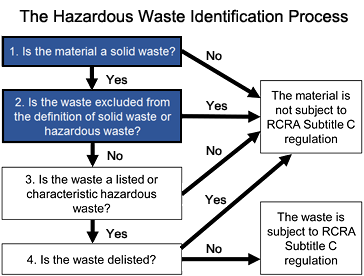The Basic Principles Of Reclaim Waste
What Does Reclaim Waste Do?
Table of ContentsReclaim Waste Can Be Fun For EveryoneWhat Does Reclaim Waste Mean?All About Reclaim WasteThe Best Strategy To Use For Reclaim WasteGetting The Reclaim Waste To Work
Explore the kinds, incidents, and forms of liquid waste. Residential sewage waste describes the waste and products from a residential septic container. This sort of waste is developed by humans in residences, colleges, and other structures. This only consists of sewage-disposal tanks that have a drainpipe area. The proper administration and disposal of domestic sewer waste call for liquid waste to be moved to a sewage treatment plant where the correct methods and devices are related to cleanse and throw away waste.
Business waste frequently includes potential hazards, such as combustible products or a blend of fluid and solid waste products, and requires a more advanced and thorough disposal process. The disposal of commercial waste normally entails the filtration of waste prior to transportation to make sure risk-free and correct disposal. Hazardous waste is created from byproducts and overflow of industrial processes and production.
This type of waste can not make use of the very same sewer management transportation or processes as septic or business liquids. The hazardous waste management process needs the assessment and screening of liquid waste before it undergoes the disposal process (industrial wastewater treatment). Drainage waste is the fluid waste that originates from overflow and excess stormwater in extremely populated areas or cities
Runoff waste can cause contamination and flooding if not taken care of effectively. Ensuring appropriate waste monitoring can prevent calamities and minimize environmental harm.
The 2-Minute Rule for Reclaim Waste
Call PROS Services today to find out about our waste management and disposal services and the correct methods to care for the liquid waste you create.
(https://reclaimwaste1.weebly.com/)Do you recognize what occurs to your water when you disengage, flush the commode or drain the cleaning device? No? Well, it deserves understanding. This supposed 'wastewater' is not just a crucial resource however, after treatment, will be launched to our land, rivers or the ocean. Made use of water from bathrooms, showers, bathrooms, kitchen area sinks, washings and industrial procedures is understood as wastewater.

water made use of to cool machinery or tidy plant and equipment). Stormwater, a kind of wastewater, is runoff that streams from farming and metropolitan locations such as roofing systems, parks, yards, roads, paths and seamless gutters into stormwater drains pipes, after rainfall. Stormwater flows unattended directly to local creeks or rivers, at some point reaching the sea.
Indicators on Reclaim Waste You Need To Know
In Queensland, the majority of wastewater is treated at sewer therapy plants. Wastewater is carried from residential or commercial websites with a system of sewers and pump terminals, referred to as sewage reticulation, to a sewer treatment plant. City governments develop, read this article preserve and operate most sewage treatment plants. Operators are accredited under the Environmental Protection Act 1994 to discharge cured wastewater at an appropriate ecological requirement into rivers.
The Department of Natural Resources encourages city governments concerning handling, operating and preserving sewerage systems and therapy plants. In unsewered locations, regional governments might need homeowners to install specific or home sewage therapy systems to treat residential wastewater from commodes, kitchens, bathrooms and laundries. The Division of Natural Resources authorises making use of household systems when they are proven to be reliable.
In some brand-new communities, treatment of some stormwater to remove clutter, sand and gravel has actually begun making use of gross pollutant catches. Wastewater treatment takes place in 4 stages: Gets rid of strong matter.
Uses small living microorganisms recognizes as micro-organisms to break down and eliminate remaining dissolved wastes and great fragments. Micro-organisms and wastes are included in the sludge.
Fascination About Reclaim Waste
Nutrient elimination is not offered at all sewer treatment plants due to the fact that it calls for expensive specialised equipment. Clear fluid effluent generated after therapy might still consist of disease-causing micro-organisms - liquid waste disposal.

This typically suggests wastewater has actually to be treated or contaminants gotten rid of before it can be discharged to rivers. Most wastewater flows right into the sewerage system. Under the Act, city governments carry out approvals and permits for ecologically appropriate tasks (Periods) involving wastewater launches that may have a local influence. The department administers authorizations and licences to Ages involving wastewater launches that might have a regional or statewide influence.
The Greatest Guide To Reclaim Waste
Or else, examples are taken for research laboratory analysis. Typically several tests are required to develop the levels of each of the various toxins such as oils, heavy metals and chemicals in water. Monitoring supplies factual details about water quality and can validate that permit problems are being fulfilled. The details gotten via surveillance provides the basis for making water quality decisions.